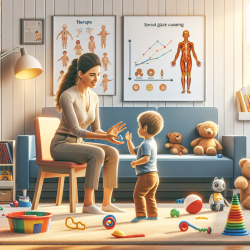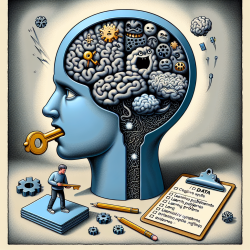Understanding Social Gaze Cueing
Social gaze cueing is a fascinating area of research that examines how nonverbal cues, such as eye gaze, influence attention and movement execution. A recent study titled "Social gaze cueing elicits facilitatory and inhibitory effects on movement execution when the model might act on an object" provides valuable insights that can be applied in therapeutic settings, especially for children.
Key Findings of the Study
The study explored how a model's gaze direction, combined with the potential to act on an object, affects movement execution. Two experiments were conducted:
- Experiment 1: The model's arms were extended, suggesting the potential to interact with the target. Results showed that the model's gaze facilitated both attention and movement execution.
- Experiment 2: The model's arms were crossed, removing the potential to act. Here, the gaze only affected attention, not movement execution.
These findings suggest that when a model appears capable of interacting with a target, their gaze can influence not just where attention is directed, but also how movements are planned and executed.
Implications for Practitioners
For speech-language pathologists and other practitioners working with children, these insights offer a new dimension to therapy:
- Enhancing Engagement: By incorporating social gaze cues into therapy, practitioners can potentially enhance a child's engagement and responsiveness. This can be particularly beneficial for children with attention deficits or autism spectrum disorders.
- Improving Motor Skills: Understanding the link between gaze cues and movement execution can help therapists design activities that improve motor planning and execution in children.
- Data-Driven Interventions: This research underscores the importance of using data-driven approaches to tailor interventions that are both effective and engaging for children.
Encouraging Further Research
While this study provides a solid foundation, further research is needed to explore the nuances of social gaze cueing in different contexts and populations. Practitioners are encouraged to stay informed about ongoing research and consider participating in studies that explore the intersection of gaze cueing and therapy outcomes.
To read the original research paper, please follow this link: Social gaze cueing elicits facilitatory and inhibitory effects on movement execution when the model might act on an object.










